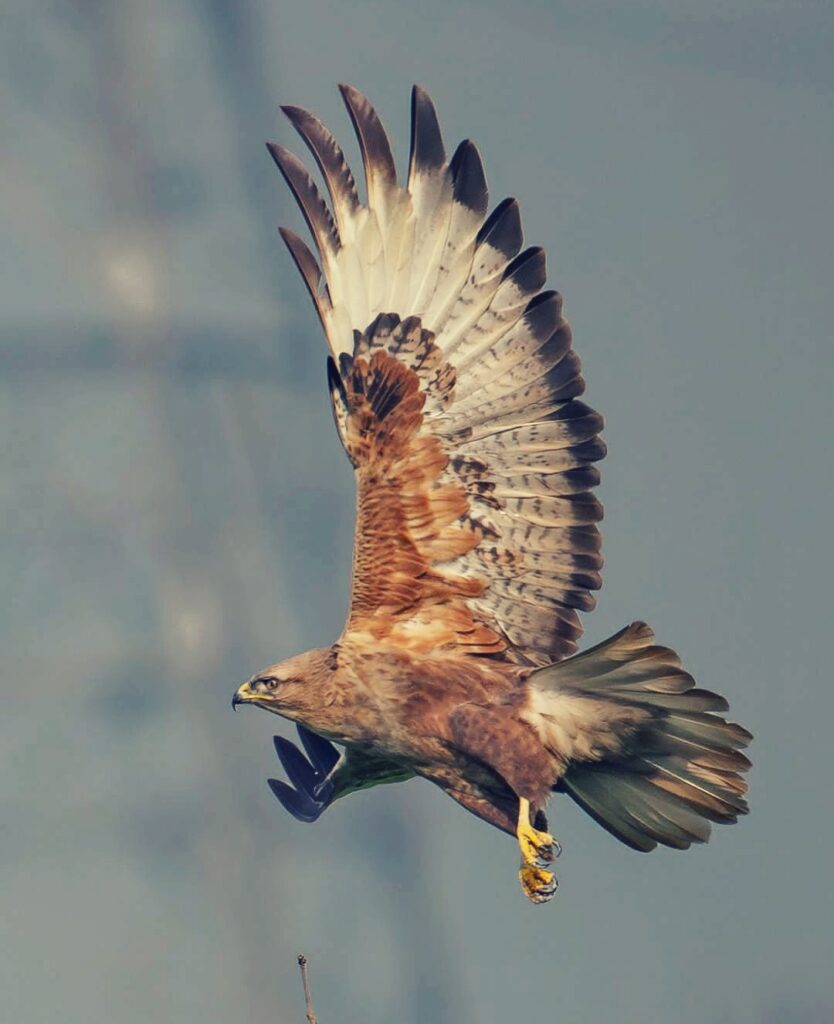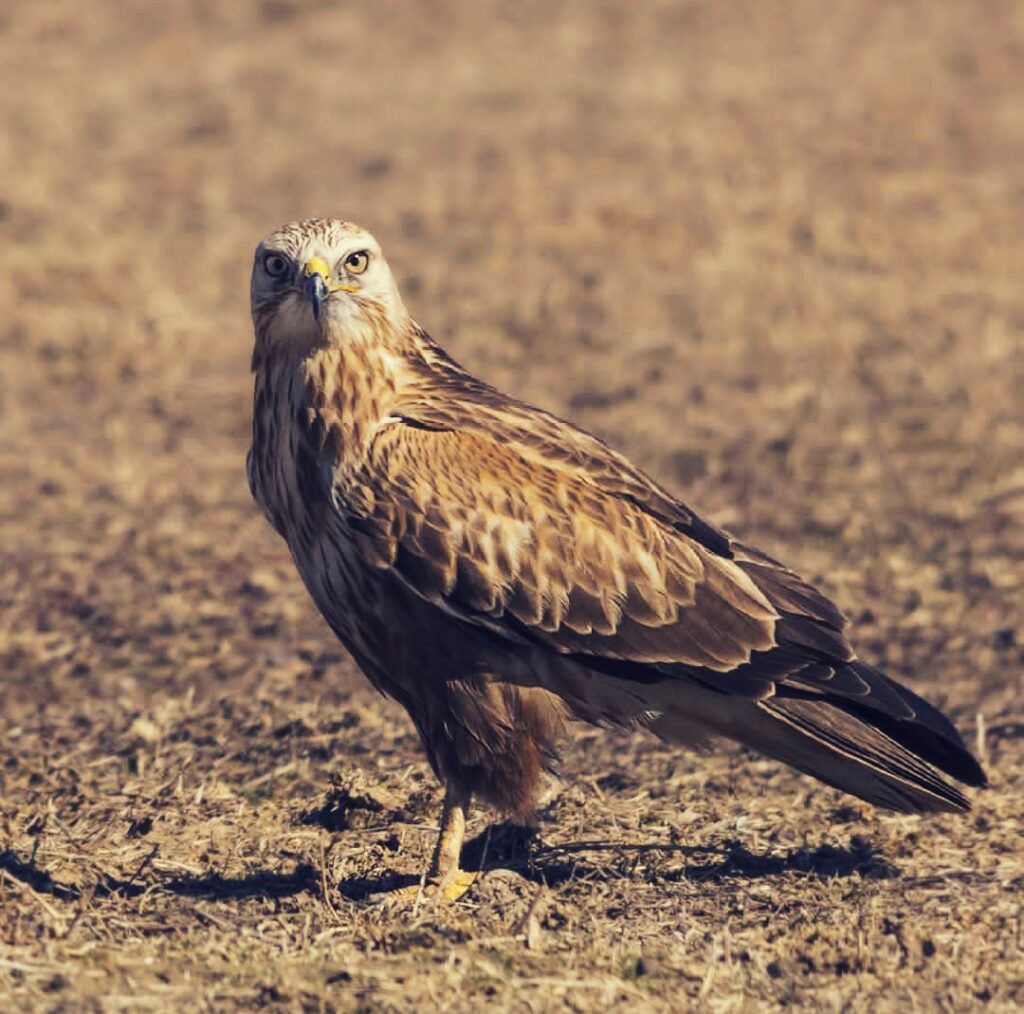LONG-LEGGED BUZZARD
Spotting a Long-legged Buzzard soaring gracefully through the skies or perched majestically on a high vantage point is a memorable sight for birdwatchers exploring the diverse landscapes of Morocco.
Appearance: The Long-legged Buzzard is a medium to large-sized raptor with a distinctive appearance. It has a robust build, broad wings, and a relatively long tail. Adults typically have dark brown plumage on their upperparts, with lighter brown or rufous coloration on their underparts. They often have a pale band across the chest and belly. Their legs are long and feathered, giving them their characteristic appearance.
Habitat: In Morocco, the Long-legged Buzzard inhabits a variety of habitats, including open grasslands, scrublands, semi-deserts, and mountainous regions. They can also be found in agricultural areas, orchards, and other human-altered landscapes. They prefer areas with open terrain and scattered vegetation, where they can hunt for prey from perches or during soaring flights.
Diet: Long-legged Buzzards are opportunistic hunters with a diverse diet that includes small mammals, birds, reptiles, amphibians, insects, and occasionally carrion. They hunt by soaring high above the ground, using their keen eyesight to spot prey. They may also hunt from perches or engage in low-level flights over the ground to surprise their prey.
Behavior: Long-legged Buzzards are often seen perched on elevated vantage points, such as trees, poles, or rock outcrops, where they can survey their surroundings for potential prey. They are skilled hunters and are known for their patience and stealth when stalking prey. They may also engage in aerial displays, including soaring flights and territorial behaviors.
Breeding: Breeding typically occurs during the spring and summer months, with pairs establishing territories and building nests in trees, cliffs, or on man-made structures. The female lays a clutch of eggs, usually numbering between two to four, and both parents share the responsibility of incubating the eggs and caring for the young.
Conservation: The Long-legged Buzzard is not considered globally threatened, but like many raptors, it faces threats such as habitat loss, persecution, and collision with power lines. Conservation efforts focused on habitat protection, reducing human-wildlife conflicts, and raising awareness about the importance of raptor conservation are crucial for ensuring the continued presence of this magnificent bird in Morocco and beyond.

